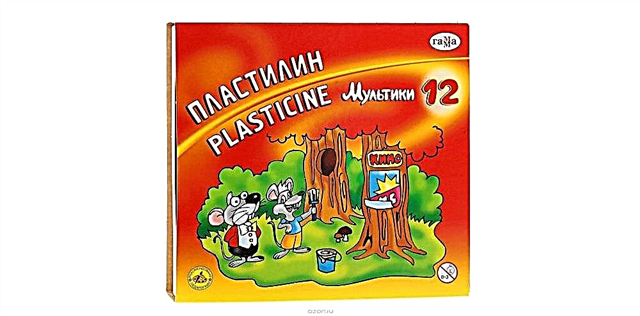
Every day, local pediatricians in their practice meet with various skin rashes in babies. One of the pathologies that is accompanied by the appearance of a skin rash is exanthema.
What it is?
The acute reaction of the child's body in response to various infections with the appearance of a rubella-like rash on the skin is called exanthema. The prevalence of this childhood disease throughout the world is quite high. Infectious exanthema can occur in both boys and girls. Doctors register quite a few cases of the disease in newborns and infants.
Most often, sudden exanthema occurs in children's practice. Its incidence peaks at the age of 2-10 months.
The first adverse signs are found even in the smallest patients. A specific skin rash appears, as a rule, after a very high temperature.


Such an acute reaction of the child's body is due to a vivid immune response to the penetration of an infectious agent into it.
Older children and adolescents suffer from this disease much less often. In adults, infectious exanthema is practically not found. Such a high incidence in children is associated with the special functioning of their immune system. The immunity of some babies reacts to various infections quite violently and brightly, which is accompanied by the appearance of specific symptoms of the disease on the skin.
Many years ago, doctors used the term "Six-day illness." So they called the sudden exanthema. The essence of this definition is that the clinical symptoms of the disease completely disappear in a sick child on the sixth day. This name is currently not used. In some countries, doctors use different terminology. They call sudden exanthema infantile roseola, pseudo-rubella, 3-day fever, roseola infantum.


There is also another, fairly common form of the disease, which is called boston exanthema. This is an acute pathological condition that occurs in babies as a result of an ECHO infection. During the course of the illness, the child develops a macular rash, high fever, and severe symptoms of intoxication syndrome. Scientists have already identified the causative agents of the disease. These include some subspecies of ECHO viruses (4,9,5,12,18,16) and less often Coxsackie viruses (A-16, A-9, B-3).
With Boston exanthema, pathogens enter the baby's body by airborne droplets or alimentary (along with food). Cases of the occurrence of Boston exanthema in newborn babies are described. In this case, the infection occurred in utero.
Scientists say that the lymphogenous spread of viruses is also actively involved in the development of Boston exanthema.
Causes
Scientists identified the causative agent of sudden exanthema at the end of the 20th century. It turned out to be herpes virus type 6. This microorganism was first found in the blood of the examined people who suffered from lymphoproliferative diseases. The herpes virus has its main effect on specific cells of the immune system - T-lymphocytes. This contributes to the fact that significant violations of the immune system occur.


Currently, scientists have received new results of scientific experiments, which indicate that the herpes simplex virus type 6 has several subtypes: A and B. They differ from each other in molecular structure and virulent properties. It has been scientifically proven that sudden viral exanthema in babies is caused by the herpesvirus type B. Viruses of subtype A can also have a similar effect, but there are currently no confirmed cases of the disease. After viruses enter the body, the processes of a violent immune response are triggered, which in some cases proceeds quite violently.
The inflammatory process leads to severe edema of collagen fibers, dilation of blood vessels, pronounced cell proliferation, and also contributes to the development of characteristic rashes on the skin.


Scientists identify several reasons that can cause signs of infectious exanthema in a child. These include:
- Bacterial infections. Bacteria cause clinical signs of illness in babies much less frequently than viruses. The most susceptible in this case to the development of infectious exanthema are babies who have signs of severe immunodeficiency or often sick children.
- Viral infections... They are the most common reason for the appearance of characteristic rashes on the skin. Enterovirus infection, flu, children's quarantine diseases can provoke the appearance of specific signs on the baby's skin.
- Parasitic diseases. The toxic effect on the child's body of the waste products of helminths leads to the fact that the baby's own immune system is disrupted. It must be said that parasites rarely cause the disease.
- A tendency to severe allergic reactions. The presence of an excessive tendency to various allergies in a child is often the result of a disturbed immune system.
- Various immune responses. These include: immunocomplex, cytotoxic and autoimmune. Such reactions occur when the child has individual hypersensitivity and defects in the immune system.


What's going on in the body?
Most often, babies become infected from each other by airborne droplets. There is another variant of infection - contact-household. Doctors note some seasonality in the development of this disease in children. The peak incidence of infectious exanthema usually occurs in spring and autumn. This feature is largely due to a decrease in immunity during seasonal colds.
Trapped in a child's body microbes contribute to the activation of the immune response. It should be noted that after suffering a type 6 herpes infection, many children have strong immunity. According to statistics, most often babies of the first year of life and children under the age of three are ill. American scientists conducted scientific studies in which they showed that most of the examined outwardly healthy people have antibodies to the herpes virus type 6 in their blood. Such a high prevalence indicates the importance of studying the process of formation of infectious exanthema at different ages.


Doctors believe that infection with this herpes infection occurs only if the disease is in an acute stage, and a person releases viruses into the environment along with biological secrets. A high concentration of microbes is usually found in blood and saliva.
When viruses enter a child's body and their effect on T-lymphocytes, a whole cascade of inflammatory immune reactions is triggered. First, the child develops Ig M. These protective protein particles help the child's body to recognize viruses and activate the immune response. It is important to note that in newborn babies who are breastfed, the level of Ig M significantly exceeds that of children receiving artificial adapted formulas as food.
After 2-3 weeks from the onset of the disease, the baby develops other protective antibodies - Ig G. An increase in their concentration in the blood indicates that the child's body has "memorized" the infection and now "knows it by sight." Ig G can remain for many years, and in some cases even for life.


The peak of an increase in their concentration in the blood is usually the third week after the onset of the disease. Detecting these specific antibodies is easy. For this, special serological laboratory tests are carried out. To carry out such an analysis, a venous blood is first taken from the baby. The accuracy of the obtained laboratory test result is usually at least 90-95%.
For a long time, scientists were worried about the question: is it possible to re-infection (infection) with the virus. In order to find the answer, they did a lot of scientific research. Experts have found that the herpes simplex virus type 6 is capable of infecting and persisting for a long time in monocytes and macrophages of various body tissues.
There are even studies showing that microbes can manifest on bone marrow cells. Any decrease in immunity can lead to the reactivation of the inflammatory process.
Symptoms
The appearance of a rash on the skin in babies is preceded by an incubation period. For a sudden exanthema, it is usually 7-10 days. At this time, as a rule, the baby does not have any signs of the disease. After the end of the incubation period, the child's temperature rises greatly. Its values can reach 38-39 degrees. The severity of the increase in temperature can be different and depends mainly on the initial state of the child.

Very young babies usually suffer from the disease rather hard. Their body temperature rises to febrile values. Against the background of a pronounced febrile condition, the child, as a rule, develops a fever and severe chills. Babies become easily excitable, whiny, poorly make contact even with close relatives. The baby's appetite also suffers. During the acute period of illness, children usually refuse to eat, but may beg for "snacks".
The baby has a pronounced increase in peripheral lymph nodes. Most often, the cervical lymph nodes are involved in the process, they become dense to the touch, are soldered to the skin. Palpation of enlarged lymph nodes can make the child sore. The baby has severe nasal congestion and a runny nose. It is usually slimy, watery. The eyelids become swollen, and the baby's expression becomes somewhat sullen and painful.


On examination of the pharynx, moderate hyperemia (redness) and looseness of the posterior wall can be seen. In some cases, specific areas of maculopapular rash appear on the upper palate and uvula. Such lesions are also called Nagayama's spots. After a while, the conjunctiva of the eye becomes injected. The eyes look painful, in some cases they can even water.
Usually, 1-2 days after the onset of a high temperature, the child develops a characteristic symptom - roseola rash. As a rule, it does not have a special localization and can occur in almost all parts of the body. During a rash on the child's skin, the temperature continues to rise. In some cases, it rises to 39.5-41 degrees.
However, a distinctive feature of febrile condition with infectious exanthema is that the baby practically does not feel it.


During the entire period of high body temperature, the child's well-being does not suffer greatly. Many babies remain active despite persistent febrile conditions. Usually, the temperature returns to normal by 4 or 6 days after the onset of the disease. Infectious sudden exanthema is a very mysterious disease. Even the absence of treatment leads to the fact that the child's condition normalizes on its own.
The spread of the rash on the body usually occurs when the temperature drops. Skin rashes begin to spread from the back to the neck, arms and legs. Loose elements can be different: maculopapular, roseolous or macular. A separate skin element is represented by a small red or pink speck, the size of which is usually does not exceed 3 mm. When you press on such elements, they begin to fade. As a rule, loose elements with infectious exanthema do not itch and do not bring any discomfort to the child. It should also be noted that skin rashes practically do not merge with each other and are located at some distance from each other.


In some babies, the rash also appears on the face. Typically, rash elements remain on the skin for 1-3 days, after which they disappear on their own. Traces and residual effects on the skin, as a rule, do not remain. In some cases, only slight redness may remain, which also goes away on its own without prescribing any special treatment.
It should be noted that infectious exanthema in babies under three years of age is much easier than in older children. Doctors note the most severe course of this pathological condition in adolescents.
Their body temperature rises dramatically, and their health deteriorates significantly. Paradoxically, infants tolerate high febrile conditions with infectious exanthema much easier than schoolchildren.


What does exanthema look like in babies?
Babies under one year old quite often have specific symptoms of this disease. The appearance of a skin rash leaves parents in real confusion. A high body temperature in a child makes them think about a viral infection. This leads to the fact that frightened parents urgently call a doctor at home. The doctor usually diagnoses a viral infection and prescribes appropriate treatment, which does not save the baby from rashes appearing on the skin.
Infectious exanthema is a specific manifestation of an altered reaction of the immune system in response to the ingress of a pathogen. If the baby has individual hypersensitivity, skin rashes will occur even with the use of special antiviral drugs. Many parents ask a reasonable question: is it worth the treatment? Helping the child's body in the fight against infection is definitely worth it.


Infectious exanthema in a newborn child does not have pronounced clinical features. For 1-2 days from the moment of high temperature, the baby also develops skin rashes. The skin of babies is rather delicate and loose. This leads to the fact that the rash spreads over the trunk quickly enough. A day later, skin rashes can be found on almost all parts of the body, including on the face.
The well-being of the child during the period of high temperature suffers slightly. Some babies may refuse to breastfeed, however, most babies continue to actively eat. One of the manifestations of infection in infants is often the appearance of diarrhea. Usually this symptom is transient and completely disappears when the temperature returns to normal.
The course of the disease in a baby under three years old is the most favorable. Recovery usually occurs 5-6 days after the first adverse symptoms appear.

Many children have stable immunity for life after an illness. In only a small number of cases, there are repeated cases of reinfection.
Doctors consider a decrease in immunity to be the starting point in the appearance of an exacerbation in such a situation.
Treatment
Infectious exanthema is one of the few childhood diseases that has the most favorable prognosis. Usually it proceeds fairly easily and does not cause any long-term consequences or complications of the disease in the child. Doctors note a severe course of the disease only in children with pronounced manifestations of immunodeficiency states.In this case, in order to eliminate adverse symptoms, such children are given a mandatory course of immunostimulating therapy. This specific treatment is prescribed by a pediatric immunologist.
For children with infectious exanthema, doctors offer a number of recommendations that help improve the well-being of the child and his speedy recovery. They recommend that the entire acute period of the disease, especially from the moment the rash appears on the skin, the child must have spent at home... At high body temperature, the baby is prescribed bed rest. Active outdoor walks during this time should be postponed until recovery.


During severe fever, do not wrap the child too tightly. This only contributes to the strong overheating of the baby and disrupts the process of protective natural thermoregulation. Fever with infectious exanthema is of a therapeutic nature. It helps the child's body fight viruses. Choose comfortable warm clothes for your baby that will protect your baby from hypothermia.
The opinions of doctors about the conduct of hygiene procedures are divided. Some experts believe that bathing a baby with infectious exanthema is possible and even contributes to the fact that the child begins to feel much better. Other pediatric doctors recommend postponing bathing and bathing for several days until body temperature returns to normal. The choice of tactics remains with the attending physician who observes the baby. However, the daily toilet of the child can be performed without any restrictions.
The appointment of special antiviral drugs for the treatment of infectious exanthema in children is not required. This condition will go away on its own in a few days.


It is only important to note that, despite the favorable prognosis of the course of the disease, the baby's condition should be carefully monitored. If you feel unwell, you should definitely consult your doctor.
Prevention
Unfortunately, scientists have not developed a specific prevention of infectious exanthema. As non-specific preventive measures, doctors recommend observing all the rules of personal hygiene and avoiding any contact with febrile and sick people. During massive outbreaks of infectious diseases in children's educational institutions, quarantine must be introduced. Such measures will significantly reduce the possibility of infection with viral infections and help prevent signs of infectious exanthema from appearing on the baby's skin.
In the next video, Dr. Komarovsky examines all the possible causes of rashes in children.



